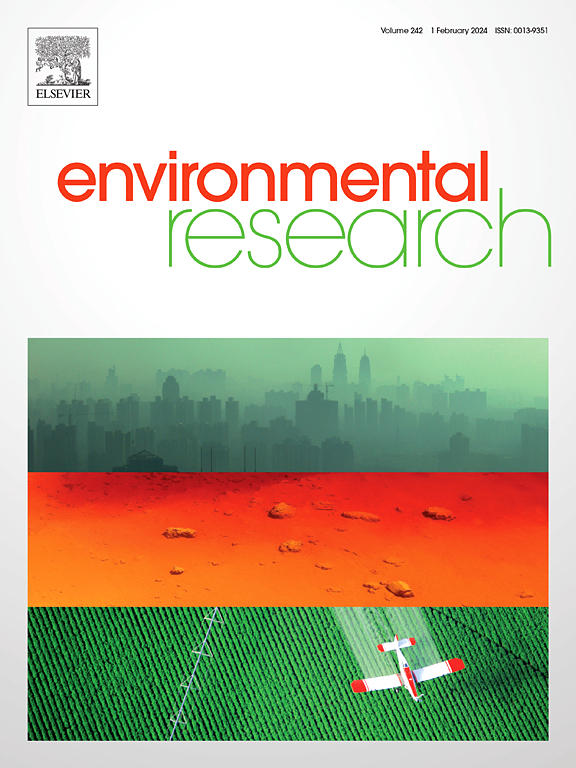Sustainable repurposing of CNT decorated oxygen-deficient perovskite LaNi0.5Co0.5O3-γ for antimony removal and reuse of the spent adsorbent in high-performance supercapacitor devices
IF 7.7
2区 环境科学与生态学
Q1 ENVIRONMENTAL SCIENCES
引用次数: 0
Abstract
This study presents the development of a multifunctional perovskite-based nanocomposite designed to address environmental remediation and material reuse. A novel hybrid material, LaNi0.5Co0.5O3-γ/carbon nanotube (LNC/CNT), was synthesized and evaluated for its dual functionality: the removal of Sb(III) from aqueous solutions and its subsequent repurposing for energy storage applications. The LNC/CNT nanocomposite demonstrated outstanding adsorption performance, achieving a removal efficiency of 92.51 %. The adsorption process followed a pseudo-second-order kinetic model (R2 = 0.996) and was well described by the Langmuir isotherm, yielding a maximum adsorption capacity of 414.99 mg/g. Following Sb(III) adsorption, the spent material was thermally treated and transformed into LNC/CNT–SbOx, exhibiting promising potential for electrochemical reuse. In a symmetric supercapacitor configuration, the repurposed material delivered a high energy density of 70.33 Wh/kg at a power density of 1000 W/kg while maintaining 89 % of its initial capacitance after 13,000 charge-discharge cycles, indicating excellent long-term cycling stability. This work highlights a circular materials strategy that converts exhausted adsorbents into value-added functional materials, offering a sustainable and eco-friendly approach to pollutant removal and energy storage.
碳纳米管修饰的缺氧钙钛矿LaNi0.5Co0.5O3-γ的可持续再利用及其在高性能超级电容器器件中的除锑和废吸附剂的再利用
本研究提出了一种多功能钙钛矿基纳米复合材料的开发,旨在解决环境修复和材料再利用问题。合成了一种新型杂化材料LaNi0.5Co0.5O3-γ/碳纳米管(LNC/CNT),并对其双重功能进行了评价:从水溶液中去除Sb(III),并随后将其重新用于储能应用。LNC/CNT纳米复合材料表现出优异的吸附性能,去除率达92.51%。吸附过程符合拟二级动力学模型(R2 = 0.996), Langmuir等温线能很好地描述吸附过程,最大吸附量为414.99 mg/g。吸附Sb(III)后,对废材料进行热处理,转化为LNC/ CNT-SbOx,具有良好的电化学再利用潜力。在对称超级电容器配置中,该材料在1000 W/kg的功率密度下提供了70.33 Wh/kg的高能量密度,同时在13,000次充放电循环后保持了89%的初始电容,表明了出色的长期循环稳定性。这项工作强调了一种循环材料策略,将耗尽的吸附剂转化为增值功能材料,为污染物去除和能量储存提供了一种可持续和环保的方法。
本文章由计算机程序翻译,如有差异,请以英文原文为准。
求助全文
约1分钟内获得全文
求助全文
来源期刊

Environmental Research
环境科学-公共卫生、环境卫生与职业卫生
CiteScore
12.60
自引率
8.40%
发文量
2480
审稿时长
4.7 months
期刊介绍:
The Environmental Research journal presents a broad range of interdisciplinary research, focused on addressing worldwide environmental concerns and featuring innovative findings. Our publication strives to explore relevant anthropogenic issues across various environmental sectors, showcasing practical applications in real-life settings.
 求助内容:
求助内容: 应助结果提醒方式:
应助结果提醒方式:


